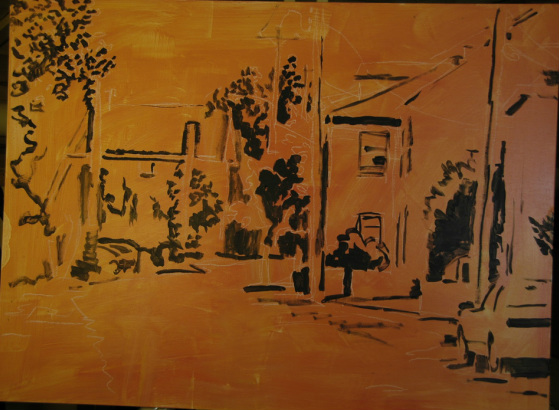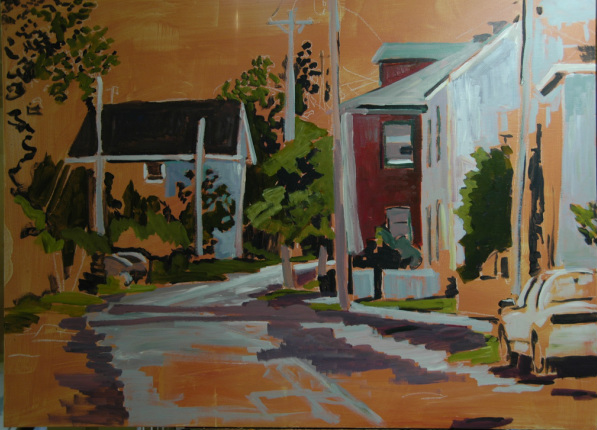|
Helen here. Today I'm tackling an urbanscape -- in fact the edge of a small town we drove through in Nova Scotia. I did my first pass, laying down the dark areas on a red-orange underpainting (because my initial ideas were to keep to the grey-blue colouring of the buildings, the overcast sky, and the asphalt road). The dark areas are going to tell me if I have a composition worth pursuing (I somehow forgot the entire roof on the left ). This stage happens pretty quickly. At this stage I felt I had the basics of a well composed scene. However, I saw that If I kept to the colours in my photograph, I was going to end up with a cold painting. So I decided to change the hues to warm up the overall painting. Once you have a sound structure you can (more or less) confidently change colours but not values - darks remain dark, lights stay light. My challenge here was to balance the smaller building on the left with the mass of buildings on the right. Initially, I trusted that what I fell in love with in the scene included all the major elements I saw in front of me. Eventually, it dawned on me that something's gotta give. There were way too many hydro and other posts crowding this scene. As artists, we must join the Ministry of Fallen Trees and take out elements that are not adding to the strength of our composition. That includes trees, posts and entire structures that must be taken out (or repositioned) in order to make a good painting. Now I had to decide which of those elements to remove. In Part Two I'll show which posts went and why, as well as how and why that house on the left got a new paint job. Back to the studio (but first, The Mentalist. Hey, Einstein said creativity is the residue of wasted time).
1 Comment
|
Keith ThirgoodIs an artist working in the Canadian, post impressionist style. I paint en plein air when I can and in the studio the rest of the time. Archives
June 2019
Categories
All
|



 RSS Feed
RSS Feed
